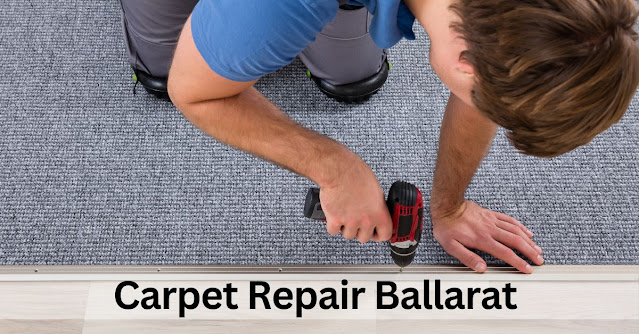Carpet Stretching: The Solution to Wrinkled and Loose Carpets
- Get link
- X
- Other Apps
Are you tired of tripping over wrinkles and bumps in your carpet? Do you cringe at the sight of those unsightly creases and loose areas? Well, fear not! Carpet stretching is the solution to all your carpet woes. Not only will it restore your carpets to their smooth and flawless state, but it can also extend their lifespan. Say goodbye to annoying hazards and hello to a beautiful home with this quick fix. Let's dive into everything you need to know about carpet stretching!
What is carpet stretching?
Carpet stretching is a process of restoring the original shape and size of a carpet by using heat and pressure. The goal is to remove any wrinkles or loose fibers, restoring the carpet to its original condition. Carpet stretching can be done in-home or at a professional service center.
In-home carpet stretching requires the use of a heat gun and an extension cord. The heat gun should be set to low heat and held against the middle of the carpet near the fray. The extension cord should be plugged into an outlet close by, and the other end should be plugged into the wall. Once activated, the heat gun will start to stretch the fiber in the carpet. It is important to move it around constantly so that all areas of the rug are stretched evenly. This process should take about 30 minutes, but can vary depending on how large and dense the rug is.
At a professional service center, carpets can be stretched using either hot air or steam. Hot air is used on more delicate fabrics while steam is used on thicker fabrics. Both methods require that a special machine be used called a shuttle barber pole machine. The machine has very sharp metal bars that glide across the fabric surface, removing any excess material while leaving the underlying fiber intact. This process usually takes about 45 minutes, but can vary depending on the size and texture of the carpet.
How does carpet stretching work?
Carpet stretching is a process that can be used to remove wrinkles and loosen carpets. The process begins by measuring the area to be stretched and then selecting the appropriate size of stretch carpet. Next, the carpet is placed on a flat surface and anchored down at both ends. The carpet is then pulled tight in the middle, and the ends are released. The result should be a tighter, smoother carpet.
Benefits of carpet stretching
There are many benefits of carpet stretching. One reason is that it will restore the elasticity in the fibers, which will help keep the rug in shape and reduce the amount of pilling. Carpet stretching can also help to reduce wrinkles and loosen any sections that have become bunched up. If you have a carpet that's been pulled or banged around, a professional carpet stretch may be your best solution.
Risks of carpet stretching
Carpet stretching is a common solution to wrinkled and loose carpets. It can be done manually or with a machine, and it is often recommended as a first step in solving carpeting problems. However, there are risks associated with carpet stretching that should be considered before undertaking the process.
Carpet stretching can damage the quality of the carpet fibers. The fibers may become stretched beyond their original elasticity, which could lead to fraying and other damage. Additionally, if the stretch is too great, it may cause tears in the fabric. These tears can lead to bacteria growth and serious odor problems.
Carpet stretching also has a chance of causing permanent damage to the floor surface. If the carpet is not properly secured to the floor surface, it may move during the stretching process and cause damage to the floor tiles or wood floors beneath it.
Finally, there is a risk of injury when performing carpet restretching Sydney. If care is not taken while engaging in this activity, someone could end up getting hurt.
How to do carpet stretching?
If you have carpets that are looking a little bit worn and tired, there is a solution! You can stretch them yourself. Before getting started, make sure to vacuum the area where the carpet will be stretched, as this will help remove any dust or debris that may be binding the fibers together.
To begin the process of stretching your carpets, take a measuring tape and mark off a 10-foot section of the carpet. Make sure to leave a 3-foot border on all sides of the stretch zone.
Now start by standing in the center of the zone and making tight fists with both hands. Keeping your fists clenched, slowly release them, allowing the carpet to wrap around your feet like taffy. Be sure to keep moving your feet so that you cover as much surface area as possible. After about 30 seconds has passed, repeat this process on the other side of the room.
After stretching your carpets, it is important to let them rest for at least 24 hours before using them again. This will allow the fibers to return to their original shape and condition.
- Get link
- X
- Other Apps


Comments
Post a Comment